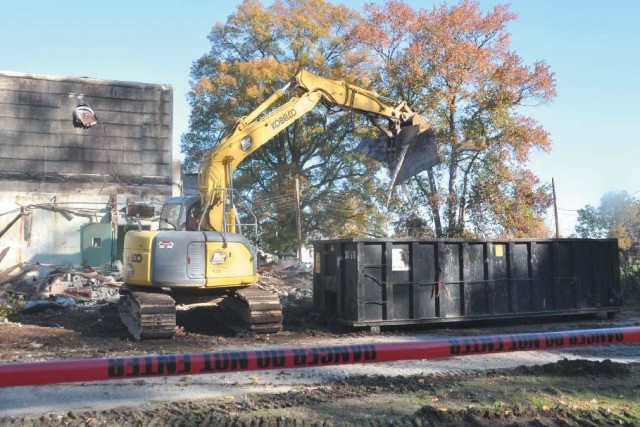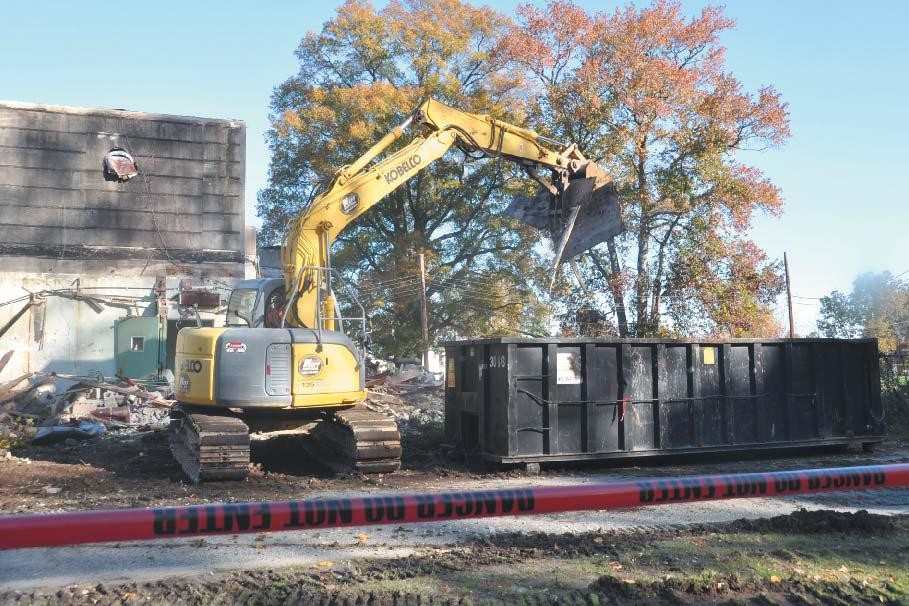ABERDEEN PROVING GROUND, Md. - In accordance with the government Facility Reduction Program, which calls for the removal of dilapidated or excess properties from military installations, the Bldg. E5282 laboratory came tumbling down during demolition operations Nov. 1.
According to Nathan Osborne, APG facility reduction program manager with
the Directorate of Public Works, the FRD is coordinated and overseen by the US. Army Corps of Engineers. Fifty of 81 buildings slated for demolition on APG have been turned to rubble thus far.
"It's how we are transforming APG into a state of the art research and development center," Osborne said. "We have some of the best labs and scientists in the world, but it doesn't look like it. This is our way of visually transforming that look and that coincides with BRAC directly."
"It takes a lot of coordination," he added, noting that coordination among
several activities is essential for a safe and successful demolition.
The garrison's directorate of public works, the installation safety office and
20th Support Command's CBRNE Analytical and Remediation Activity were
among the organizations participating in the demolition of Bldg. E5282, a weed covered structure at the intersection of Hoadley and Noble roads.
Kerry Jones, CARA unexploded ordnance supervisor, said that more than
3,000 items were found during a below ground sweep of the area; 18 to 38 inches down, using a megalometer.
"It was a two-man job over four days," Jones said, noting that recovered
items included canisters and cluster grenades.
Will Heaney, a project engineer from the Baltimore District USACE, said buildings like this are coming down "all over the country."
"Our role is to work with the contractors to ensure compliance with regulations and codes and to coordinate with the garrisons should problems pop up," Heaney said.
Bill Alcarese, acting director of the garrison ISO, said fundamental and special measures applied to the project. According to Alcarese, the demolition process incurs hazards due to unknown factors such as deviation in the structure's design, building modifications that altered original design and unknown strengths or weakness of existing construction
material.
"Marcor [the demolition contractor] takes the safest approach, that being the deliberate collapse of the structure," he said.
"They have taken into account the method to demolish and addressed worker and public safety issues, including potential airborne contaminates such as silica, asbestos and lead paint."


Social Sharing